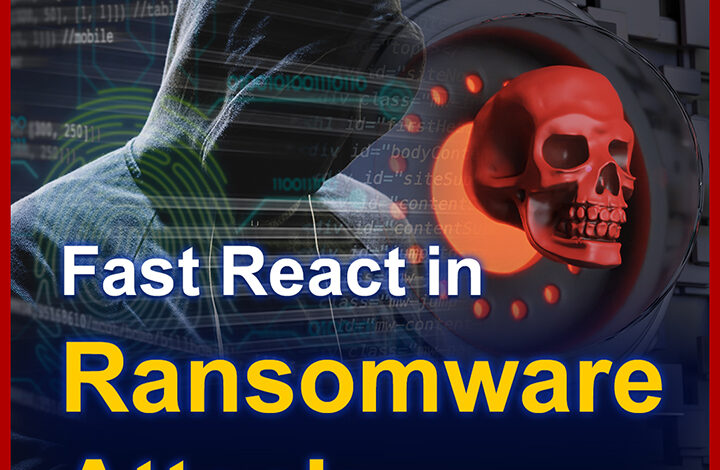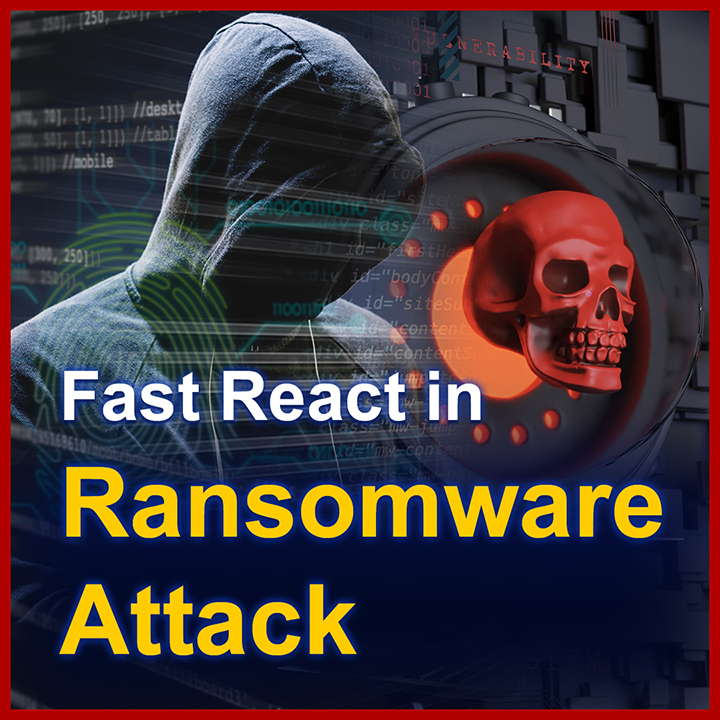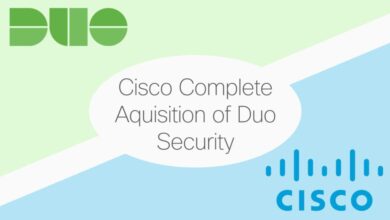
Hurtigruten Suffers a Serious Ransomware Attack
Hurtigruten suffers a serious ransomware attack – that headline alone sent shockwaves through the travel industry and beyond. This wasn’t just a minor inconvenience; this was a full-blown digital siege targeting one of the world’s most iconic cruise lines. The immediate impact was devastating, disrupting operations, crippling systems, and leaving a trail of anxious customers and significant financial losses in its wake.
But how did this happen, what was the extent of the damage, and what lessons can we learn from this high-profile cybersecurity incident?
The attack affected everything from booking systems and customer databases to operational infrastructure, causing widespread disruption to sailings and leaving passengers stranded or facing significant travel disruptions. The financial repercussions were immediate and substantial, impacting not only Hurtigruten’s bottom line but also the livelihoods of countless employees and the wider tourism ecosystem dependent on its operations. The ensuing data breach raised serious concerns about the security of sensitive passenger information, triggering legal and regulatory investigations.
The incident served as a stark reminder of the vulnerability of even the most established companies to sophisticated cyberattacks.
Immediate Impact of the Ransomware Attack
The ransomware attack on Hurtigruten, while swiftly addressed, left a significant mark on the company’s operations and reputation. The immediate aftermath was chaotic, with widespread disruption across various departments and a scramble to contain the damage and restore essential services. The scale of the incident and its immediate consequences underscore the vulnerability of even large, established companies to sophisticated cyberattacks.The initial hours and days following the attack were characterized by a near-total standstill in several key operational areas.
The attackers’ actions severely crippled the company’s ability to manage bookings, communicate with customers, and process payments. This disruption rippled outwards, impacting not only Hurtigruten’s internal operations but also the travel plans of thousands of passengers and the livelihoods of employees.
Operational Disruption
The ransomware attack immediately impacted several core Hurtigruten systems. Booking platforms were rendered inaccessible, preventing new reservations and causing significant delays in processing existing ones. Internal communication systems, including email and internal messaging platforms, were also compromised, hindering effective collaboration and crisis management within the company. Crucially, the ship-to-shore communication systems experienced significant outages, creating challenges in coordinating logistics and ensuring the safety and well-being of passengers already at sea.
The impact extended to the company’s customer service department, leaving many passengers struggling to obtain updates or make changes to their bookings. The lack of accessible information fuelled anxieties and led to widespread negative publicity.
Financial Losses
Quantifying the precise immediate financial losses is difficult, and official figures may not be released for some time. However, we can infer significant losses from several sources. The immediate halt in new bookings resulted in a substantial loss of revenue. The costs associated with incident response, including hiring cybersecurity experts, restoring systems, and communicating with affected customers, were also considerable.
Potential legal liabilities, arising from disrupted travel plans and customer compensation claims, could add further to the financial burden. The impact on Hurtigruten’s stock price, if publicly traded, would also reflect the immediate financial repercussions. For example, a similar attack on a comparable cruise line could lead to a temporary stock drop of 5-10%, representing millions of dollars in lost market capitalization.
Impact on Customer Bookings and Travel Plans
The attack caused significant disruption to numerous customer travel plans. Many passengers experienced delays in receiving their booking confirmations or accessing essential travel information. Some had their sailings cancelled or significantly altered due to operational limitations. The inability to contact Hurtigruten directly amplified the frustration and uncertainty experienced by affected passengers. The reputational damage caused by the incident could lead to future cancellations and a decrease in bookings, impacting the company’s long-term financial stability.
Similar incidents in the travel industry have shown a significant drop in bookings for several months following a major security breach.
Affected Systems and Services
The ransomware attack primarily targeted Hurtigruten’s IT infrastructure. This included the company’s booking system, customer relationship management (CRM) system, internal communication platforms, and possibly financial systems. The extent of the data breach, if any, remains unclear, but the potential for sensitive customer data to have been compromised is a serious concern. The attack’s impact on operational systems on board the ships was also significant, affecting navigation, communication, and possibly even some onboard services.
The full extent of the affected systems may not be immediately apparent, as the investigation unfolds.
Data Breach and Security Implications: Hurtigruten Suffers A Serious Ransomware Attack
The Hurtigruten ransomware attack highlighted the vulnerability of even established companies to sophisticated cyber threats. The scale of the data breach and its subsequent implications for the company, its customers, and its reputation are significant and deserve careful examination. Understanding the types of data compromised, the legal ramifications, and the company’s security posture before and after the incident is crucial for learning from this event and preventing similar attacks in the future.The potential data compromised in the Hurtigruten attack is concerning.
Given the nature of the business—a cruise line handling passenger bookings, travel itineraries, and financial transactions—the compromised data likely included sensitive personal information such as names, addresses, passport numbers, credit card details, and travel itineraries. Employee data, including payroll information and internal communications, may also have been affected. The exposure of this data poses significant risks for both the individuals affected and the company itself.
Legal and Regulatory Ramifications
The legal and regulatory consequences for Hurtigruten following the ransomware attack are substantial. Depending on the jurisdiction, the company may face fines and penalties under data protection laws such as the GDPR (General Data Protection Regulation) in Europe and the CCPA (California Consumer Privacy Act) in the United States. Class-action lawsuits from affected customers are also a strong possibility.
The company’s failure to adequately protect customer and employee data could result in significant financial losses and reputational damage. Furthermore, investigations by regulatory bodies may lead to further scrutiny of their security practices and potential enforcement actions. Hurtigruten’s response to the attack, including notification of affected individuals and remediation efforts, will be critically evaluated by regulators and legal authorities.
Security Protocols: Before and After the Attack
Understanding Hurtigruten’s security posture before and after the attack is essential for assessing the effectiveness of their response and identifying areas for improvement. While specific details of their pre-attack security protocols were not publicly disclosed in detail, the fact that a successful ransomware attack occurred indicates vulnerabilities in their systems. This might include insufficient endpoint protection, inadequate employee training on cybersecurity best practices, or a lack of robust incident response planning.
Post-attack, Hurtigruten likely implemented improved security measures, including enhanced endpoint security, multi-factor authentication, and more rigorous employee training. They also likely reviewed and updated their incident response plan. However, the long-term success of these improvements remains to be seen.
Best Practices for Preventing Future Attacks
Preventing similar ransomware attacks requires a multi-layered approach encompassing both technical and organizational measures. This includes regular security audits and penetration testing to identify vulnerabilities, employee training programs focused on phishing awareness and safe internet practices, robust data backup and recovery systems, and the implementation of a comprehensive incident response plan. Implementing multi-factor authentication (MFA) for all user accounts and regularly patching software are also crucial.
Furthermore, investing in advanced threat detection and response technologies, such as endpoint detection and response (EDR) solutions, can significantly improve an organization’s ability to detect and respond to threats in real-time. Finally, strong encryption for both data at rest and in transit is paramount to mitigate the impact of a successful attack.
| Pre-Attack | Post-Attack |
|---|---|
| Likely insufficient endpoint protection | Enhanced endpoint security, including EDR solutions |
| Potentially inadequate employee training on cybersecurity | More rigorous employee training programs, focusing on phishing and safe internet practices |
| Possibly lacking robust incident response plan | Updated and more comprehensive incident response plan |
| May have lacked multi-factor authentication | Implementation of multi-factor authentication (MFA) for all user accounts |
| Potentially insufficient data backup and recovery systems | Improved data backup and recovery systems, possibly with offsite backups |
Hurtigruten’s Response and Recovery Efforts
Hurtigruten’s response to the ransomware attack was swift and, while undeniably challenging, demonstrated a commitment to transparency and recovery. Their actions, though initially reactive, evolved into a proactive strategy aimed at minimizing long-term damage and restoring operational normalcy. This involved a multi-faceted approach encompassing immediate containment, system restoration, and extensive communication with affected parties.The company’s response wasn’t perfect, and there were undoubtedly lessons learned, but the overall approach highlights the importance of a robust incident response plan in the face of a significant cyberattack.
Timeline of Hurtigruten’s Response
The timeline of Hurtigruten’s response, pieced together from various news reports and official statements, reveals a phased approach to addressing the crisis. Initial detection of the ransomware attack triggered an immediate internal investigation and the engagement of external cybersecurity experts. This was followed by the implementation of containment measures to prevent further spread of the malware. System restoration involved a careful, phased approach, prioritizing critical systems and gradually bringing other services back online.
Throughout this process, communication with passengers, employees, and other stakeholders was paramount. While specific dates are often omitted from public reporting for security reasons, the general sequence of events reflects a structured and methodical response.
Containment and System Restoration
Containment efforts focused on isolating infected systems to prevent the ransomware from spreading further within Hurtigruten’s network. This involved shutting down affected servers and systems, implementing network segmentation, and deploying security patches to vulnerable software. System restoration involved a combination of techniques, likely including data recovery from backups, rebuilding affected systems, and implementing enhanced security protocols. The phased approach prioritized restoring critical systems such as booking and communication platforms before addressing less essential services.
This careful, incremental approach minimized disruption and allowed for thorough testing at each stage.
Communication Strategy
Hurtigruten’s communication strategy was crucial in managing the fallout from the attack. They opted for a transparent approach, acknowledging the incident promptly and keeping stakeholders informed about the progress of their recovery efforts. This involved issuing regular press releases, updating their website, and directly communicating with affected passengers and employees. This proactive communication likely helped mitigate negative publicity and maintain trust with their customer base.
The strategy was designed to provide timely updates without jeopardizing the ongoing investigation and recovery process.
Effectiveness of the Crisis Management Plan
While the ransomware attack undoubtedly caused significant disruption, Hurtigruten’s response suggests a reasonably effective crisis management plan was in place. Their swift action to contain the attack, their transparent communication, and their methodical system restoration demonstrate a preparedness that mitigated the long-term consequences. The eventual restoration of services and the lack of major long-term reputational damage point towards a successful, albeit stressful, navigation of a significant cybersecurity crisis.
However, the incident also highlights areas for potential improvement, including perhaps more robust preventative measures and even more frequent security audits.
Long-Term Effects and Lessons Learned

The Hurtigruten ransomware attack, while seemingly contained, left a lingering shadow impacting various aspects of the company’s operations and reputation. The long-term effects extend beyond the immediate costs of recovery and extend into financial performance, operational adjustments, and brand perception. Understanding these effects is crucial not only for Hurtigruten but also for other businesses to learn from this significant cybersecurity incident.The financial repercussions are likely to be felt for years.
Direct costs included the ransom payment (if one was made – this information was not publicly disclosed, adding to the uncertainty), the cost of restoring systems, hiring cybersecurity experts, and potential legal fees. Indirect costs are harder to quantify but include lost revenue due to operational disruptions, the potential loss of customers concerned about data security, and the cost of rebuilding trust.
For example, a similar attack on a smaller cruise line could lead to a significant drop in bookings for months, even after systems are restored, impacting profitability for a considerable period. The extent of the financial damage ultimately depends on the company’s insurance coverage and its ability to regain customer confidence.
Hurtigruten’s Operational Changes
The attack forced Hurtigruten to implement significant changes to its operational procedures. This includes enhanced cybersecurity protocols, investments in advanced threat detection and response systems, and more rigorous employee training programs on cybersecurity best practices. Improved data backup and recovery systems are likely in place, along with a more robust incident response plan. The company also likely reviewed and updated its vendor risk management processes, ensuring that third-party suppliers adhere to stringent security standards.
These changes, while costly in the short term, are vital for long-term resilience.
Impact on Hurtigruten’s Reputation and Brand Image
The ransomware attack undoubtedly damaged Hurtigruten’s reputation and brand image. The incident raised concerns among customers about the security of their personal data and the company’s ability to protect sensitive information. Negative media coverage further amplified these concerns. To mitigate the damage, Hurtigruten likely implemented a comprehensive communications strategy to address customer concerns, emphasize the steps taken to improve security, and reassure customers of their commitment to data protection.
The long-term impact on brand image depends on the effectiveness of these efforts and the company’s ability to demonstrate its commitment to security going forward. Rebuilding trust takes time and consistent action.
Lessons Learned for Other Companies
The Hurtigruten incident offers valuable lessons for other companies, highlighting the importance of proactive cybersecurity measures.
- Invest in robust cybersecurity infrastructure: This includes advanced threat detection and response systems, regular security audits, and employee training.
- Implement a comprehensive data backup and recovery plan: Regular backups to offline storage are crucial to ensure business continuity in the event of an attack.
- Develop a robust incident response plan: A well-defined plan helps organizations respond effectively to cyberattacks, minimizing damage and downtime.
- Conduct regular security awareness training for employees: Educating employees about phishing scams, malware, and other cyber threats is crucial to preventing attacks.
- Prioritize vendor risk management: Thoroughly vetting third-party vendors and ensuring they adhere to stringent security standards is essential.
- Maintain transparent communication: Openly communicating with customers and stakeholders during and after a cybersecurity incident helps build trust and mitigate reputational damage.
- Consider cybersecurity insurance: Insurance can help offset the financial costs associated with a ransomware attack.
Cybersecurity Insurance and Mitigation Strategies

The Hurtigruten ransomware attack highlights the critical need for robust cybersecurity insurance and proactive mitigation strategies. The financial fallout from such an incident, including data recovery costs, legal fees, and reputational damage, can be crippling for even a large company. A comprehensive insurance policy can significantly lessen this burden, but the type of coverage and the proactive measures taken beforehand are equally vital.Cybersecurity insurance plays a crucial role in mitigating the financial impact of ransomware attacks and other cyber incidents.
It acts as a safety net, helping organizations recover from significant financial losses that would otherwise severely impact their operations and long-term viability. While insurance won’t prevent an attack, it provides crucial financial support during the recovery process, allowing companies to focus on restoring systems and operations rather than facing immediate bankruptcy. The value of this peace of mind should not be underestimated.
Cybersecurity Insurance Policy Coverage
Different cybersecurity insurance policies offer varying levels of coverage. Some policies focus primarily on data breach response, covering costs associated with notification, legal fees, credit monitoring, and public relations. Others offer broader coverage, encompassing ransomware payments (though this is often subject to strict conditions and limitations), system restoration costs, business interruption insurance, and even forensic investigation expenses. The level of coverage often dictates the premium cost, with more comprehensive policies naturally commanding higher premiums.
For example, a basic policy might cover only data breach notification, while a premium policy might cover business interruption losses for an extended period, along with ransomware payment coverage under specific circumstances. Companies must carefully evaluate their risk profile and choose a policy that aligns with their specific needs and budget.
Proactive Cybersecurity Measures
Proactive cybersecurity measures are essential for minimizing the risk of cyberattacks and reducing the potential financial impact. These measures are not just about reacting to threats; they are about creating a robust security posture that makes an attack less likely and less damaging. This includes regular security audits, employee training programs focused on phishing and social engineering awareness, multi-factor authentication (MFA) for all accounts, strong password policies, and robust endpoint protection.
Investing in advanced threat detection systems, such as intrusion detection and prevention systems (IDPS), can also provide early warning signs of malicious activity. Furthermore, regular software updates and patching are crucial to address known vulnerabilities. A layered security approach, combining various preventive and detective controls, is highly recommended. Failing to implement these measures can significantly increase insurance premiums or even lead to policy exclusions.
Hypothetical Cybersecurity Insurance Policy for Hurtigruten
A hypothetical cybersecurity insurance policy tailored for Hurtigruten should cover a broad range of potential incidents. Given the nature of their business – a cruise line with significant operational technology (OT) and customer data – the policy should include:* High limits for data breach response, covering notification costs, legal fees, credit monitoring for affected customers, and public relations management.
- Coverage for business interruption, considering the potential for significant revenue loss during system downtime. This should include coverage for lost bookings and operational disruptions.
- Coverage for ransomware attacks, subject to conditions such as the implementation of robust security measures before the incident.
- Coverage for forensic investigation and system restoration, to facilitate a swift and efficient recovery.
- Cybersecurity consulting and incident response services, to provide expert guidance during and after an incident.
- Coverage for reputational damage, which can be significant following a major data breach.
The policy should also incentivize proactive security measures through premium discounts for implementing specific security controls, such as MFA, regular security audits, and employee training programs. The premium cost would reflect the high level of risk associated with Hurtigruten’s operations and the extensive coverage provided. This hypothetical policy demonstrates the necessity of a comprehensive approach to cybersecurity insurance, reflecting the specific vulnerabilities and operational needs of the insured.
The Hurtigruten ransomware attack highlights the vulnerability of even large organizations to cyber threats. Building robust, secure systems is crucial, and that’s where understanding the future of application development comes in. Check out this article on domino app dev the low code and pro code future to see how innovative approaches can help improve security and resilience against such attacks.
Ultimately, the Hurtigruten incident underscores the need for proactive, forward-thinking security strategies in all sectors.
Public Perception and Media Coverage
The Hurtigruten ransomware attack, while impacting a relatively niche sector of the travel industry, generated significant public interest and media attention. This was partly due to the nature of the company – a well-known and respected cruise line operating in a stunning, environmentally sensitive region – and partly due to the scale and potential impact of the data breach.
The initial public reaction was a mixture of concern for passenger data security and disappointment in a company that had previously cultivated a strong image of reliability and environmental responsibility.The media portrayal of the event varied across different outlets. Some focused on the immediate disruption to operations and the inconvenience faced by passengers, while others emphasized the security vulnerabilities exposed and the potential long-term reputational damage to Hurtigruten.
The narrative often highlighted the irony of a company promoting sustainable tourism being vulnerable to a cyberattack, a juxtaposition that amplified public scrutiny. Many articles explored the broader implications of ransomware attacks on the travel industry, raising questions about data protection practices and the preparedness of other cruise lines and tourism businesses.
Media Coverage Compared to Similar Incidents
Comparing Hurtigruten’s media coverage with similar incidents in other industries reveals some interesting patterns. While the immediate impact of a ransomware attack – operational disruption, data breaches, and financial losses – is consistently highlighted, the specific framing often depends on the industry and the public perception of the affected company. For example, a ransomware attack on a financial institution might trigger more intense public concern and regulatory scrutiny compared to an attack on a smaller, less regulated business.
The media’s focus on Hurtigruten’s environmental brand and the potential impact on sensitive passenger data contributed to a more nuanced and potentially more critical media narrative than might have been seen in other sectors. The response of the company, and its transparency (or lack thereof), played a significant role in shaping public opinion and the subsequent media coverage.
Effective Public Relations Strategies in Crisis Situations
Effective crisis communication is crucial in mitigating the negative impact of a ransomware attack. Transparency, promptness, and empathy are key elements. Companies should immediately acknowledge the incident, Artikel the steps taken to address it, and communicate openly with affected individuals. Proactive engagement with the media, providing regular updates, and demonstrating a commitment to remediation builds trust and helps manage the narrative.
Avoidance of misleading statements or downplaying the severity of the incident can further damage the company’s reputation. Companies should also demonstrate a clear understanding of the lessons learned and Artikel measures taken to prevent future incidents.
Hypothetical Press Release, Hurtigruten suffers a serious ransomware attack
FOR IMMEDIATE RELEASEHurtigruten Addresses Recent Cybersecurity Incident[City, Date] – Hurtigruten acknowledges a recent cybersecurity incident involving unauthorized access to our systems. We immediately initiated our incident response plan, engaged leading cybersecurity experts, and took decisive steps to secure our systems and contain the threat. While we are still investigating the full extent of the incident, we can confirm that certain customer data may have been accessed.
We are notifying affected individuals directly and providing them with support and resources.The safety and security of our passengers and their data is our top priority. We have taken significant steps to enhance our cybersecurity defenses and are committed to preventing future incidents. We are cooperating fully with relevant authorities and will continue to provide updates as our investigation progresses.
We sincerely apologize for any inconvenience or concern this incident may have caused. Contact:[Contact Name][Contact Email][Contact Phone Number]
Technological Aspects of the Attack
The Hurtigruten ransomware attack, while shrouded in some secrecy due to the company’s understandably tight-lipped approach, offers a valuable case study in the evolution of sophisticated cybercrime. Analyzing the publicly available information allows us to speculate on the technical details, highlighting the vulnerabilities exploited and the challenges faced during recovery.The likely type of ransomware used was a highly sophisticated variant capable of widespread network encryption and data exfiltration.
Given the scale of the disruption and the reported impact on operational systems, it’s improbable that a simple, readily available strain was employed. The attackers likely used a custom-built or heavily modified ransomware strain, potentially incorporating elements of known families like Ryuk or REvil, but with unique features designed to maximize impact and complicate recovery. This would explain the difficulty Hurtigruten faced in restoring their systems.
Methods of Access
The attackers likely gained initial access through a combination of phishing techniques and the exploitation of known vulnerabilities within Hurtigruten’s network infrastructure. Phishing emails, designed to look legitimate and targeting employees with access to sensitive systems, are a common entry point for ransomware attacks. Once initial access was gained, the attackers likely moved laterally within the network, mapping its structure and identifying high-value targets, such as databases containing customer information and operational systems controlling the cruise ships.
Exploiting unpatched software, particularly within legacy systems, is another probable avenue of intrusion. The attackers may have used tools like Metasploit or similar penetration testing frameworks to identify and exploit weaknesses.
Technical Challenges During Recovery
The recovery process presented several significant technical challenges. The encryption of critical data, including operational systems and customer databases, required the development of custom decryption tools or the negotiation with the attackers (a decision that carries significant ethical and security risks). Restoring systems from backups proved difficult, potentially due to the attackers’ ability to corrupt or delete backup copies.
The sheer scale of the affected systems and the complexity of the Hurtigruten network also contributed to the extended downtime. Data integrity verification after recovery was another major challenge, requiring thorough checks to ensure that no malicious code remained hidden within the restored systems.
Potential Vulnerabilities Exploited
Several potential vulnerabilities may have been exploited by the attackers. These could include outdated software versions with known security flaws, weak password policies that allowed for brute-force attacks, lack of multi-factor authentication, inadequate network segmentation that allowed lateral movement within the network, and insufficient endpoint protection. The absence of robust security monitoring and incident response capabilities may also have contributed to the success of the attack, allowing the attackers to operate undetected for a significant period.
The lack of regular security audits and penetration testing further increased the risk of successful exploitation.
Outcome Summary
The Hurtigruten ransomware attack stands as a potent case study in the devastating consequences of cybersecurity breaches. While the immediate chaos and financial losses are undeniable, the long-term effects on reputation, operational procedures, and future investment in cybersecurity are equally significant. The incident underscores the crucial need for robust security protocols, proactive risk management, and comprehensive crisis communication strategies.
For Hurtigruten, recovery involves not just restoring systems, but rebuilding trust and demonstrating a commitment to enhanced security measures. The lessons learned here resonate far beyond the cruise industry, serving as a wake-up call for all businesses operating in today’s increasingly digital world.
FAQ Corner
What type of ransomware was used in the attack?
The specific type of ransomware used hasn’t been publicly disclosed by Hurtigruten or investigators. This information is often withheld to prevent other organizations from becoming targets.
Did Hurtigruten pay the ransom?
Hurtigruten has not publicly confirmed whether or not they paid a ransom. Paying ransoms is generally discouraged as it doesn’t guarantee data recovery and can embolden attackers.
What long-term changes did Hurtigruten make to its operations?
While specifics are likely confidential, we can expect improvements in their cybersecurity infrastructure, employee training, and incident response planning. They probably implemented more rigorous data backup and recovery systems.
How did the attack impact Hurtigruten’s employees?
The impact on employees likely ranged from job insecurity due to operational disruptions to increased workload during the recovery phase. The company’s response to employee concerns would be a key factor in maintaining morale and retaining talent.





